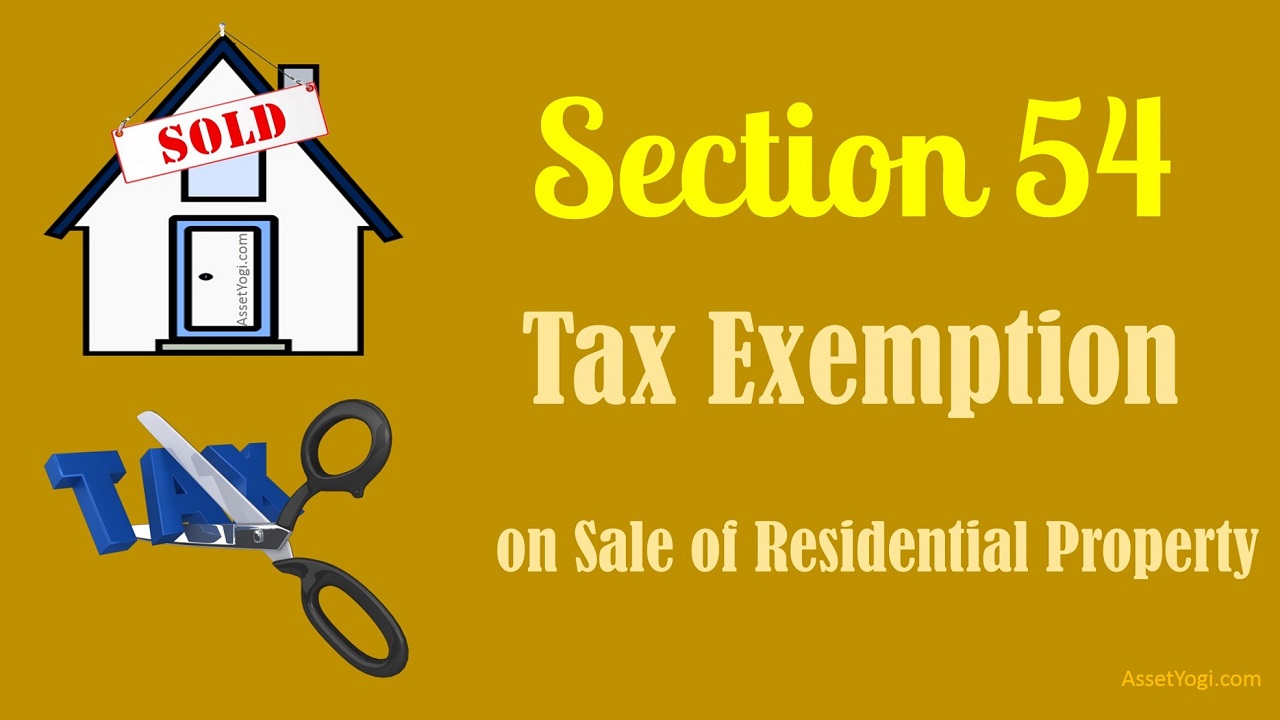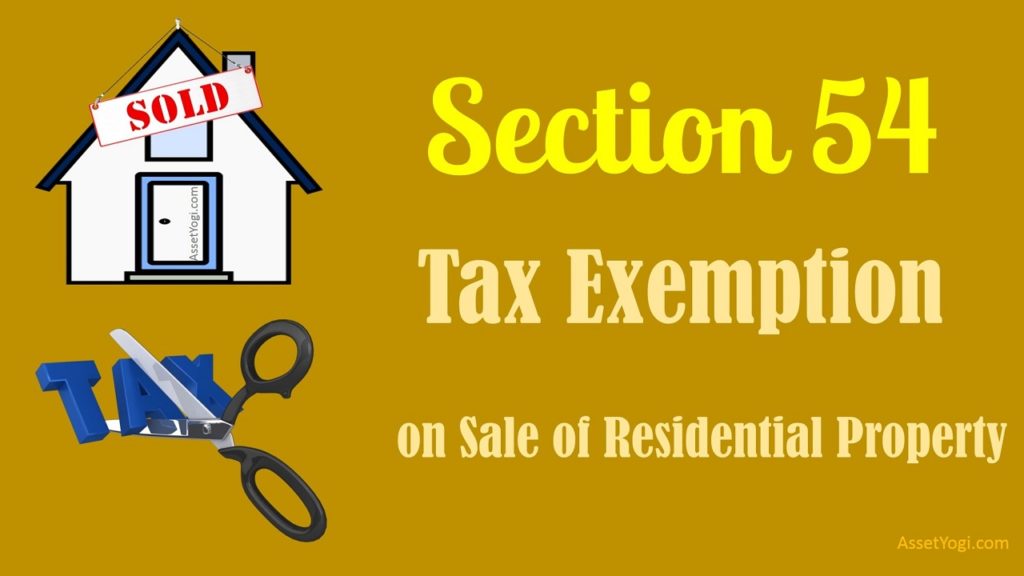Updates and details for About Section 54, Section 54B, Section 54D, Section 54G/ 54GB:
In this article, I have given you all the basic and important details of Section 54, Section 54B, Section 54D, Section 54G/ 54GB. So just read it carefully and stay tuned with us for more updates.

| S.No. | Basis | Section 54 | Section 54B | Section 54D |
| 1) | Allowability | Exemption is Allowed provided the Assessee has Long Term Capital Gains on transfer of Residential House | Exemption is Allowed provided the Assessee has Capital Gains on transfer of Agricultural Land | Exemption is Allowed provided the Assessee has Capital Gains on Compulsory Acquisition of Industrial Undertaking. |
| 2) | Allowed To | Individual/HUF | Individual/HUF | All Assessees |
| 3) | Conditions to be Satisfied | a.) The Assessee Should have purchased one house either one year before or two years after the date of transfer OR The Assessee should Construct one house within three years after the date of transfer | a.) The Assessee Should have purchased one or more Agricultural Land within a period of two years after the date of transfer | a.) The Assessee Should have Invested the Amount in Land and Building for the purpose of Industrial Undertaking within a period of Three years after the date of Payment by Government. |
| b.) The Assesee Should either Purchase or Construct only one House within the specified time period. | b.) The Assesee or his parents should have been using Agricultural Land so transferred for a period of atleast 2 years at the time of Sale | b.) The Assesee should have been using such Land and Building for the purpose ofIndustrial Undetaking for a period of atleast 2 years at the time of Acquisition. | ||
| c.) The House so purchased or constructed should not be transferred for a period of atleast Three Years | c.) The Land so purchased should not be transferred for a period of atleast Three Years | c.) The Land and Building so purchased should not be transferred for a period of atleast Three Years | ||
| 4) | Amount of Exemption | Amount of Exemption shall be equal to Amount Invested(Subject to Capital Gains) | Amount of Exemption shall be equal to Amount Invested(Subject to Capital Gains) | Amount of Exemption shall be equal to Amount Invested(Subject to Capital Gains) |
| 5) | Capital Gain Accounts Scheme,1988 Aplicability* | Applicable | Applicable | Applicable |
| 6) | Consequences | If Assessee Violates Condition c.) stated above Exemption earlier allowed shall be withdrawn in special manner i.e. While Computing Capital Gains, Cost of Acquistion shall be reduced by the amount of exemption earlier taken. | If Assessee Violates Condition c.) stated above Exemption earlier allowed shall be withdrawn in special manner i.e. While Computing Capital Gains, Cost of Acquistion shall be reduced by the amount of exemption earlier taken. | If Assessee Violates Condition c.) stated above Exemption earlier allowed shall be withdrawn in special manner i.e. While Computing Capital Gains, Cost of Acquistion shall be reduced by the amount of exemption earlier taken. |
Sr.No.
|
Basis |
Section 54EC |
Section 54F |
Section 54GB |
Section 54G/ 54GA
|
1) |
Allowability |
Exemption is Allowed provided the Assessee has Capital Gains on transfer of any Capital Asset |
Exemption is Allowed provided the Assessee has Long Term Capital Gains on transfer of any Capital Asset except Residential House |
Exemption is Allowed provided the Assessee has Long Term Capital Gains on transfer of any Residential House or Plot. |
Exemption is Allowed provided the Assessee has Capital Gains in connection with shifting of Industrial Undertaking from Urban area to any other area. |
2) |
Allowed To |
All Assessees |
Individual/HUF |
Individual/HUF |
All Assessees |
3) |
Conditions to be Satisfied |
a.) The Assessee Should have Invested the Amount in Long Term Specified Asset within a period of Six Months from the date of transfer. However from the Assessment Year 2018-19 investment in any bonds redeemable after three years shall be eligible for exemption |
a.) The Assessee Should have purchased one house either one year before or two years after the date of transfer OR The Assessee should Construct one house within three years after the date of transfer |
a.) The Assessee Should have Incorporated a new company before due date of filling of Return of Income & Should have subscribed to more than 50% of the Shares of the Company. |
a.) The Assessee Should have Invested the Amount in Land and Building or P&M ( Not Furniture & Fixture for the purpose of Industrial Undertaking either one year before or three years after the date of transfer |
b.) The Assesee is not allowed to Convert the Security into Cash i.e. The Assessee is not allowed to take Loan on the basis of security |
b.) The Assesee Should either Purchase or Construct only one House within the specified time period. Also, the Assessee should not have more than one house in his name at the time of transfer. |
b.) The Assesee Should Invest the Amount in Plant & Machinery within one Year from the date of Purchase of Shares. |
Exemption shall also be allowed for shifting expenses |
||
c.) The Asset so purchased should not be transferred before its expiry period. |
c.) The House so purchased or constructed should not be transferred for a period of atleast Three Years |
c.) The Plant & Machinery so purchased should not be transferred for a period of atleast Five Years. |
c.) The Asset so purchased should not be transferred for a period of atleast three years. |
||
4) |
Amount of Exemption |
Amount of Exemption shall be equal to Amount Invested(Subject to Capital Gains) |
Amount of Exemption shall be equal to Capital Gains/Net Consideration*Amount of Investment |
Amount of Exemption shall be equal to Capital Gains/Net Consideration*Amount of Investment (Subject to Capital Gains) |
Amount of Exemption shall be equal to Amount Invested in Land & Building and Plant & Machinery(Not Furniture & Fixture) (Subject to Capital Gains) |
5) |
Capital Gain Accounts Scheme,1988 Aplicability* |
Not Applicable |
Applicable |
Not Applicable. However If Assessee fails to make investment in P&M within one year then amount shall be deposited into Specified Bank Account |
Applicable |
6) |
Consequences |
If Assessee Violates Condition c.) stated above Exemption earlier allowed shall be considered to be Long Term Capital Gain of the Year in which the Asset has been transferred. |
If Assessee Violates Condition c.) stated above Exemption earlier allowed shall be considered to be Long Term Capital Gain of the Year in which the Asset has been transferred. |
If Assessee Violates Condition c.) stated above Exemption earlier allowed shall be withdrawn in special manner i.e. While Computing Capital Gains, Cost of Acquistion shall be reduced by the amount of exemption earlier taken. |
If Assessee Violates Condition c.) stated above Exemption earlier allowed shall be considered to be Capital Gain of the Year in which the Asset has been transferred. |
EXEMPTION FOR CAPITAL GAINS ARISING ON TRANSFER OF RESIDENTIAL HOUSE PROPERTY:
Introduction:
A person wanted to shift his residence due to certain reason, hence, he sold his old house and from the sale proceeds he purchased another house. In this case the objective of the seller was not to earn income by sale of old house but to acquire another suitable house.
If in this case the seller was responsible to pay income-tax on capital profit arising on sale of old house, then it would be a hardship on him. Section 54 gives relief from such a hardship. Section 54 gives relief to a taxpayer who sells his residential house and from the sale proceeds he acquires another residential house. The detailed provisions in this regard are discussed in this part.
Follow the basic conditions should be satisfied to claim the benefit of section 54.
- The benefit of section 54 is available only to an individual or HUF.
- The asset transferred should be a long-term capital asset, being a residential house property.
- Within a period of one year before or two years after the date of transfer of old house, the taxpayer should acquire another residential house or should construct a residential house within a period of three years from the date of transfer of the old house. In case of compulsory acquisition the period of acquisition or construction will be determined from the date of receipt of compensation (whether original or additional).
Differences between these two Sections:
| Section 54 | Section 54F |
|---|---|
| To claim full exemption the entire capital gains have to be invested. | To claim full exemption the entire sale receipts have to be invested. |
| In case entire capital gains are not invested – the amount not invested is charged to tax as long-term capital gains. | In case entire sale receipts are not invested, the exemption is allowed proportionately. [Exemption = Cost the new house x Capital Gains/Sale Receipts] You should not own more than one residential house at the time of sale of the original asset. |
| You should not own more than one residential house at the time of sale of the original asset. | |
| This exemption will be reversed if you sell this new property within 3 years of purchase and capital gains from sale of the new property will be taxed as short-term capital gains. | This exemption will be reversed if you sell this new property within 3 years of its purchase or construction OR if you purchase another residential house within 2 years of the sale of the original asset or construct a residential house other than the new house within 3 years of sale of the original asset. Capital gains from the sale will be taxed as long-term capital gains. |
Stay tuned with us for more updates and keep browsing our site.
